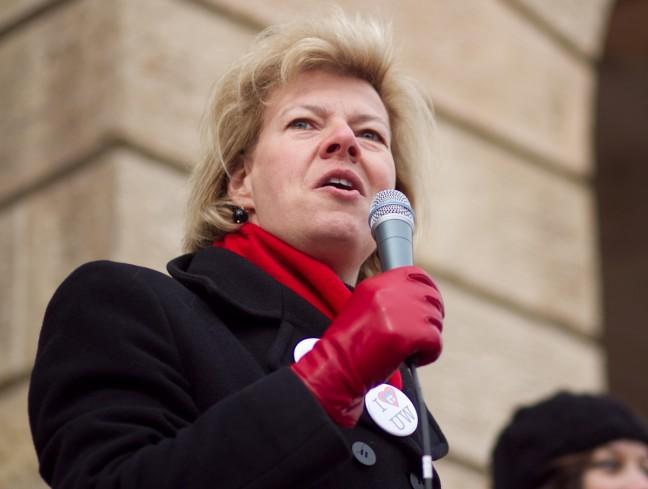U.S. Sen. Tammy Baldwin, D–Wisconsin, is leading the fight to restore the federal Perkins Loan Program in the Senate in an effort to help keep college “affordable.”
Despite gaining the approval of the fiery dumpster that is the House of Representatives, Baldwin’s efforts are stymied in the Senate by a small group led by U.S. Sen. Lamar Alexander, R–Tennessee, who is chairman of the Senate Committee on Education.
Regardless of how the current battle ends, it is simply fighting a symptom of the larger crisis in college affordability.
Wisconsin Sen. Baldwin continues to push for Perkins Loan reauthorization
The Perkins Loan is one of several federal loan programs offered to students and the only one that is based at each individual institution. This means that each school has some “skin in the game” due to their own financial contributions and can tailor the program to the needs on their specific campus.
Alexander claims the program will cost $5 billion over the next decade and that is money that may be better spent elsewhere such as Pell Grants or different loan programs that may have better terms for students. He claims the loans offer inflexible repayment terms and higher interest rates.
Despite looking like a solid reason for canning the program, Alexander does not paint the full picture. The Coalition of Higher Education Assistance Organizations, an advocacy group for student aid, refutes Alexander’s points.
The Perkins Loan can be consolidated into Direct Loans for income-based repayments and offers deferred accrual of interest rates while you’re still in school. The alternative “cheaper” Stafford loans offer variable interest rates which end up costing students more than the “more expensive” Perkins Loan.
Regardless of how the fight for the Perkins Loan turns out — and I expect it to be extended in the near future — the larger question is how the federal government can help make college more affordable and attainable. Without substantial and meaningful reform to how government helps fund higher education, students simply cannot afford to keep up with the rising costs.
One of the biggest stumbling blocks is the idea that students need to work to “earn” their education and pay their own way. You’ve had that conversation with your drunk uncle at Thanksgiving, haven’t you? It usually starts with “Back in my day … ” and ends with “Thanks, Obama.” Somewhere in the middle of the rant is a sentence or two about how he worked to earn money to pay his own way through school and kids these days should do the same.
I’m not particularly fun at family functions because I like to break out research and data at this point and really kill the vibe. A full-time minimum wage worker with no time off earns about $15,000 before taxes are taken out.
The estimated cost of attending UW is more than $24,000 for an in-state student. So a college student would have to work full-time at a local minimum-wage job, and can expect to still take out nearly $10,000 in loans per year simply to cover the cost of attending a university like UW.
Even if this student wants to go to one of UW’s many two-year schools to save on expenses, the estimated cost of attendance is more than $19,000 per year.
While at this point family conversation usually uncomfortably changes subjects, we cannot afford to ignore the core issue any longer. Students can no longer work to pay their own way through school and it is foolishly naïve to think they can.
Baldwin is fighting a good fight, and we should have Perkins Loans as part of a robust package for reducing student burden of higher education. But, Alexander raises the vital point that saving the Perkins Loan Program fight is barely a Band–Aid for struggling students. We need comprehensive and fundamental reform to how we support public education, and this fight is a distraction.
Adam Johnson ([email protected]) is a master’s candidate at the La Follette School of Public Affairs.














